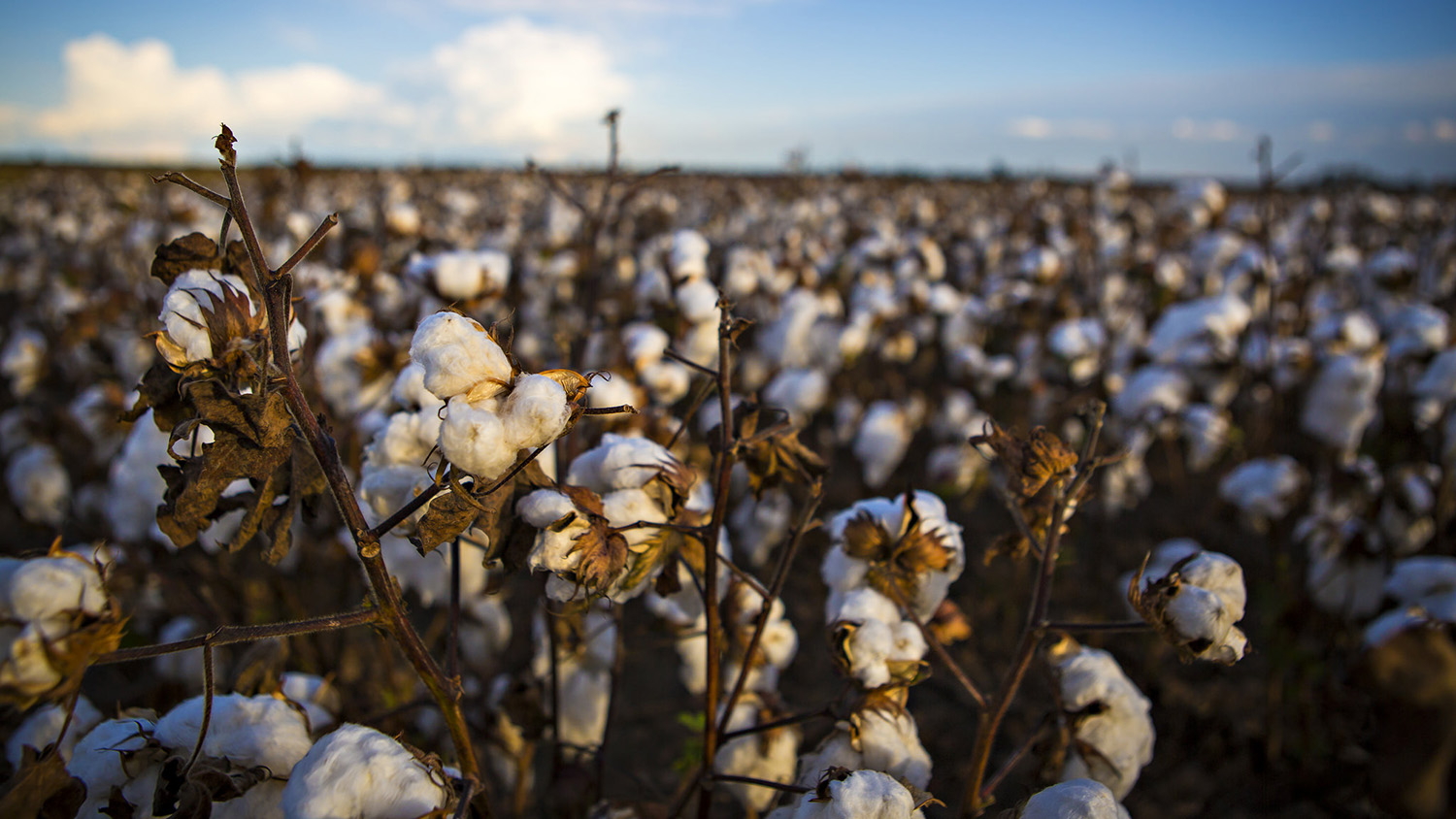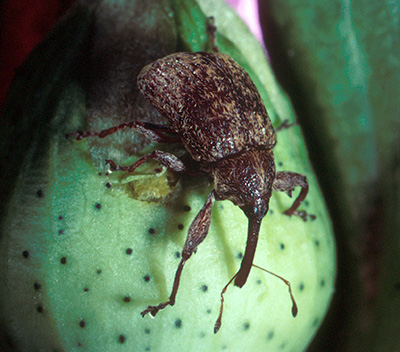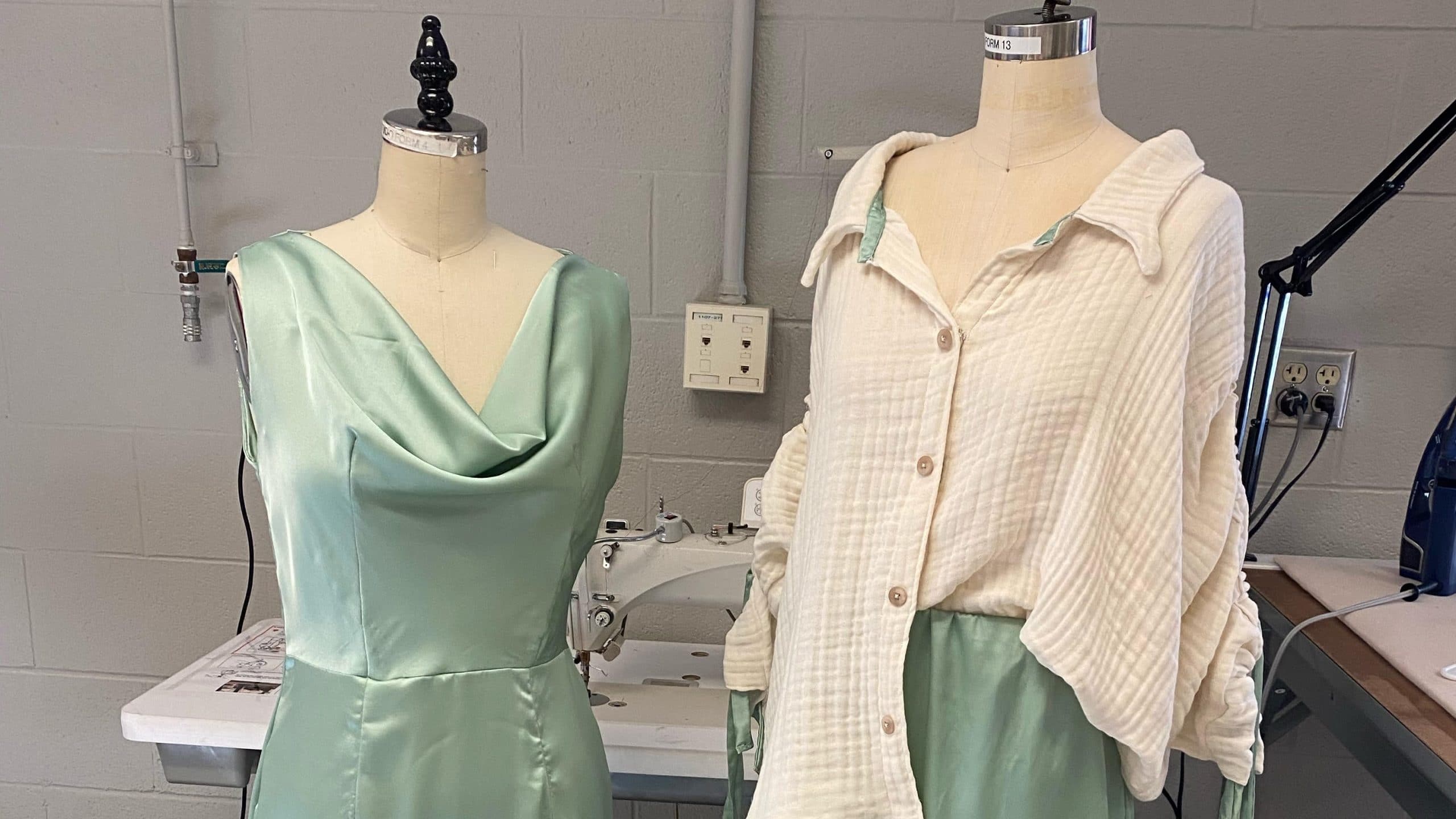The Boll Weevil War, or How Farmers and Scientists Saved Cotton in the South

Editor’s note:This is a guest post byDominic Reisig, an associate professor of entomology at NC State. In our ongoingResearch Mattersseries, NC State researchers address the value of science, technology, engineering and mathematics.
鲍尔维尔(Boll Weevil)(Anthonomus Grandis)没有什么可看的 - 只是一只灰色的小甲虫,带有令人印象深刻的鼻子。但是,这种特殊的甲虫及其对棉花的渴望,足以建立农民,立法者和科学家之间前所未有的伙伴关系。这种伙伴关系表明,当科学家和农民共同努力时,可以完成多少工作。

成年鲍尔象鼻虫缺乏幼虫的能力和破坏棉花的能力所弥补的。Boll Weevils于1800年代后期从墨西哥进入美国,当时他们是在德克萨斯州首次发现的。到1920年代,他们已经遍及该国所有主要棉花生产地区。损害的范围是令人叹为观止的,对这种昆虫的控制努力也是如此:一次,美国使用的杀虫剂中有三分之一被用来对抗玻璃象鼻虫。
In 1903, the chief of the U.S. Department of Agriculture (USDA) testified before Congress that the insect’s outbreaks were a “wave of evil,” and that afflicted areas in Mexico had abandoned cotton production altogether. Indeed, many scholars agree that the impact was so great on the rural South’s cotton-dependent economy that it was one of the causes of the “Great Migration,” when African Americans moveden masse1900年代初到美国北部。
Despite the arrival of the boll weevil, cotton production at first actually increased in the U.S., because the price of cotton increased as the boll weevil ran some cotton growers out of business. Cotton production moved in advance of the weevil, creating a boom in cotton plantings in areas that were weevil-free. But as the cotton spread, so did the boll weevil – costing cotton growers billions in revenue.
宣战象鼻虫
Then, in 1958, something novel happened. The National Cotton Council of America unanimously agreed, for the first time ever, on a piece of farm legislation. Among other things, that legislation called for cotton research to be expanded – and the boll weevil to be eliminated.

This was an unusual step for many reasons. First, efforts had been made to eradicate insects in livestock before, but no one had ever tried it with a crop pest; this was breaking new ground. Second, this was going to cost a lot of money, which would require the support of the federal government. Third, nobody had yet come up with a way to eradicate the insect. Finally, once eradication began, the eradication process would become a common pool resource. Because of this, cooperation would be vital, given that there would be a temptation for individuals, or whole regions, to get a free ride, relying on the contributions of their neighbors to the eradication effort. So mandatory farmer participation was a must. One by one, each of the challenges were addressed, requiring close collaboration at every step.
消除昆虫并不是一个全新的概念。根除的促进者是美国农业部农业研究服务(USDA-ARS)科学家爱德华·诺普林(Edward Knipling),他提出了一个称为无菌昆虫技术的想法。这项技术在1950年代开创了以消除牛虫的寄生虫害虫的螺丝虫。无菌昆虫技术依赖于许多无菌雄性淹没环境。这些男性随后与女性交配,但不会产生任何后代。现在,Knipling设想了根除螺栓象鼻虫,意识到它的盔甲有两个叮当声。首先,它是一个异国情调的物种,这意味着它可以存在,而没有一些削弱其本地墨西哥人口的寄生虫和捕食者。其次,它依赖于单一的寄主植物棉花,该植物也不是美国本地的
Unfortunately, the sterile insect technique bombed. One million sterile boll weevil males were released in a trial. But the sterile males couldn’t compete with their virile wild counterparts and the trial was unsuccessful.
如果要消除,科学家将不得不开发一种新方法。为此,联邦政府,州政府和各种棉花基金会和协会拨款数百万美元,以支持开发消除必要工具所需的研究。
For example, Congress funded USDA-ARS laboratories in many states, including one on the campus of Mississippi State University that was critical to creating many of the tools needed for eradication. This support continued through the eradication effort, ensuring that the insect could be eliminated beginning in Virginia and northeastern North Carolina, and moving steadily southward.
但根除面临明显的研究人员cant challenge up front. They knew that, for eradication to be successful, there had to be a very effective method of controlling boll weevils – one with a success rate of close to 100 percent. And that would require a significant leap over the available control techniques.
During the 1950s, controlling boll weevil infestations required multiple applications of very harsh and toxic insecticides (e.g., aldrin, azinphosmethyl, benzene hexachloride, chlordane, dieldrin, toxaphene, malathion, methyl parathion, and parathion). But a separate scientific advance was just around the corner.
New Weapons
在1960年代,研究人员刚刚开始理解昆虫信息素的重要性,昆虫信息素是由昆虫物种产生的化学物质,这些化学物质会改变该物种中其他个体的行为。USDA-ARS科学家发现了Boll Weevil的性吸引人的信息素 - 允许雄性鲍尔象鼻虫找到雌性鲍尔象鼻虫的化学物质的组合。这些研究人员能够完善合成的吸引剂信息素的混合物,从而产生了可用于捕获多孔的螺栓象鼻虫的诱饵。这一进步将被证明是成功消除的关键,因为象鼻虫可以被吸引,捕获和监测。
另一个重大突破的发现method of control that increased success from 85-90 percent control to 98-99 percent.
Insect development is dependent on temperature, and lower temperatures slow down weevil development and reproduction. Mississippi scientists discovered that, by making multiple insecticide applications at short intervals during the autumn, they could both reduce the last reproductive generation of the weevils and significantly limit the survival of potentially overwintering adults. This was termed the reproduction-diapause control method.
Keep Up With the Series
Subscribe to receive the latest stories from our faculty about the importance of scientific research.The combination of the pheromone traps and the reproduction-diapause control method meant that, given cooperation on an area-wide basis, the boll weevil might be eradicated. And the pheromone traps cold also be used to confirm whether eradication efforts were successful. This one-two punch was tested in a pilot program in Alabama, Mississippi and Louisiana during the early 1970s. The pilot program couldn’t prove that this approach would eradicate boll weevils, but it was successful enough at reducing population levels that government, industry and research officials opted to proceed with a large-scale approach. This next step involved rolling out two companion trials in the late 1970s: one trial took place in Mississippi using the best known control methods for boll weevil at the time, while another trial tested the reproduction-diapause control method in North Carolina and Virginia.
Cooperation was critical to the North Carolina/Virginia trial. The federal government came through with enough funding to support 50 percent of the trial, while the state of North Carolina agreed to pick up another 25 percent of the cost. And more than three-quarters of North Carolina cotton growers approved of the eradication, agreeing to fund the remaining 25 percent. Meanwhile, a new insecticide had become available, diflubenzuron, which proved to make the eradication even more successful.
After three years, the reproduction-diapause method proved so successful that only one weevil was trapped in the North Carolina/Virginia eradication area. Moreover, this weevil was thought to be left over in a contaminated trap that hadn’t been cleaned properly. Insecticide use plummeted after eradication, but expansion and continuation of the program was not easy. Problems with funding, grower support in new eradication areas, and outbreaks of other pests, resulting from intensive insecticide applications used in eradication efforts – which obliterated beneficial insects that normally kept pests in check – slowed the process However, by 2009, the boll weevil was declared eradicated from all U.S. cotton-producing states, with one exception: Texas, which is the biggest cotton producer in the country.
A Fragile Victory
Which brings us to 2017. Eradication efforts have been stalled at the Texas-Mexico border, largely due to the instability created by illegal drug trafficking. That instability has effectively made large cotton farms in Mexico inaccessible for treatment, creating a welcoming habitat for boll weevil populations to rebound. Another problem in Mexico is the presence of non-cotton plant species that can host boll weevil. Further efforts to limit cooperation across the border, including the proposed border wall, ensure that the boll weevil’s “wave of evil” remains a looming threat. As a result, there is an ongoing battle to keep boll weevils in check in the Lower Rio Grande Valley of Texas, funded by an ongoing annual assessment from cotton-producing states, which is aimed at preventing – and tracking – the spread of boll weevil populations.
但是这个故事也强调了一个事实,即由于种植者,科学家和政府官员之间的合作,鲍尔维尔在美国大部分被征服了,而且很大程度上是由于联邦研究资金。例如,在美国东南部,14年来未在信息素陷阱中捕获鲍尔维尔(Boll Weevil)。那些在南部进行的联邦投资继续以新项目的形式支付股息,由于鲍尔维尔(Boll Weevil)的投资,这些项目准备应对当今的本地和侵入性昆虫。
For example, those early investments by state and federal governments created the USDA-ARS research system that is still present today across the southern U.S., including the facility at Mississippi State. This system continues to make a difference for U.S. farms. Research units in areas that still have boll weevil populations are using cutting-edge technologies, such as population genetics and aerial infrared imaging, to track movement of the species and identify potential patches of host plants for destruction. As boll weevils have been slowly eradicated, state by state, these researchers and facilities have shifted research priorities to other issues and pests affecting crop production. No one wants to fight another hundred-year war with a plant pest.
- 类别:




卡拉·麦考姆斯(Carla McCombs),您是对的。当科学作者的政治隶属关系从文章的偏见中如此简单时,我想知道还有什么其他事情可能不准确?
托马斯·雷金。退休商人, do a web search for Guinea Worm, Dracunculus medinensis.
有趣的文章节省了有关荒谬的观念的政治评论,即建造边界墙将以某种方式阻止墨西哥将自己的农作物释放出象鼻虫。已经停止了。
This article helps me to know what efforts had been done to eradicate these weevils. Such a good read. Thanks, will surely try out pheromone traps to solve our weevil problem!
农业对我们的国家非常重要。我很高兴我们的研究和扩展人与农民和联邦计划合作,以保持农业强大而富有成效。
I enjoyed reading this article, just a question is this the only bug or animal that the Government supported the eradication of a spices of anything! I guess it’s only in the US.